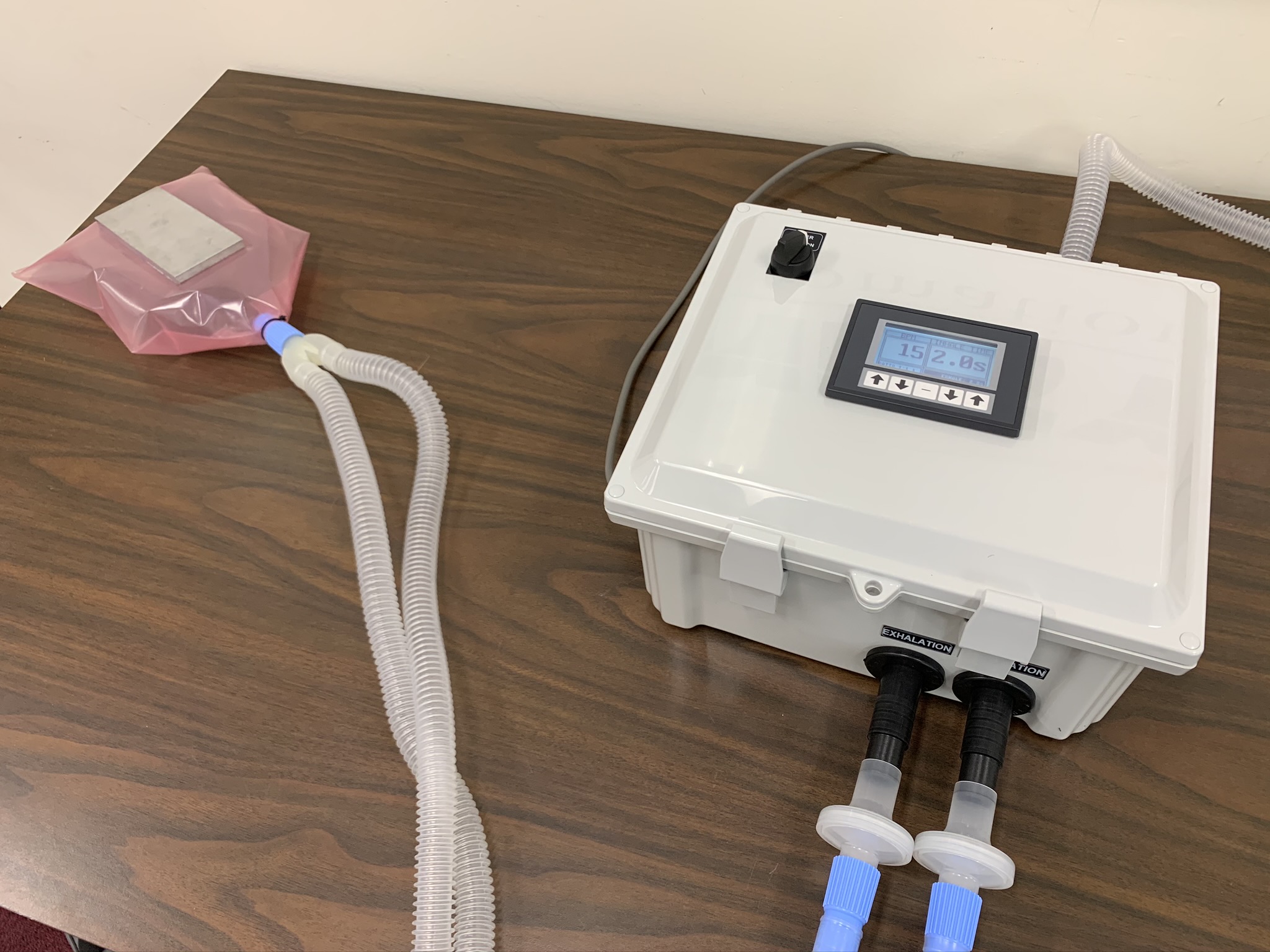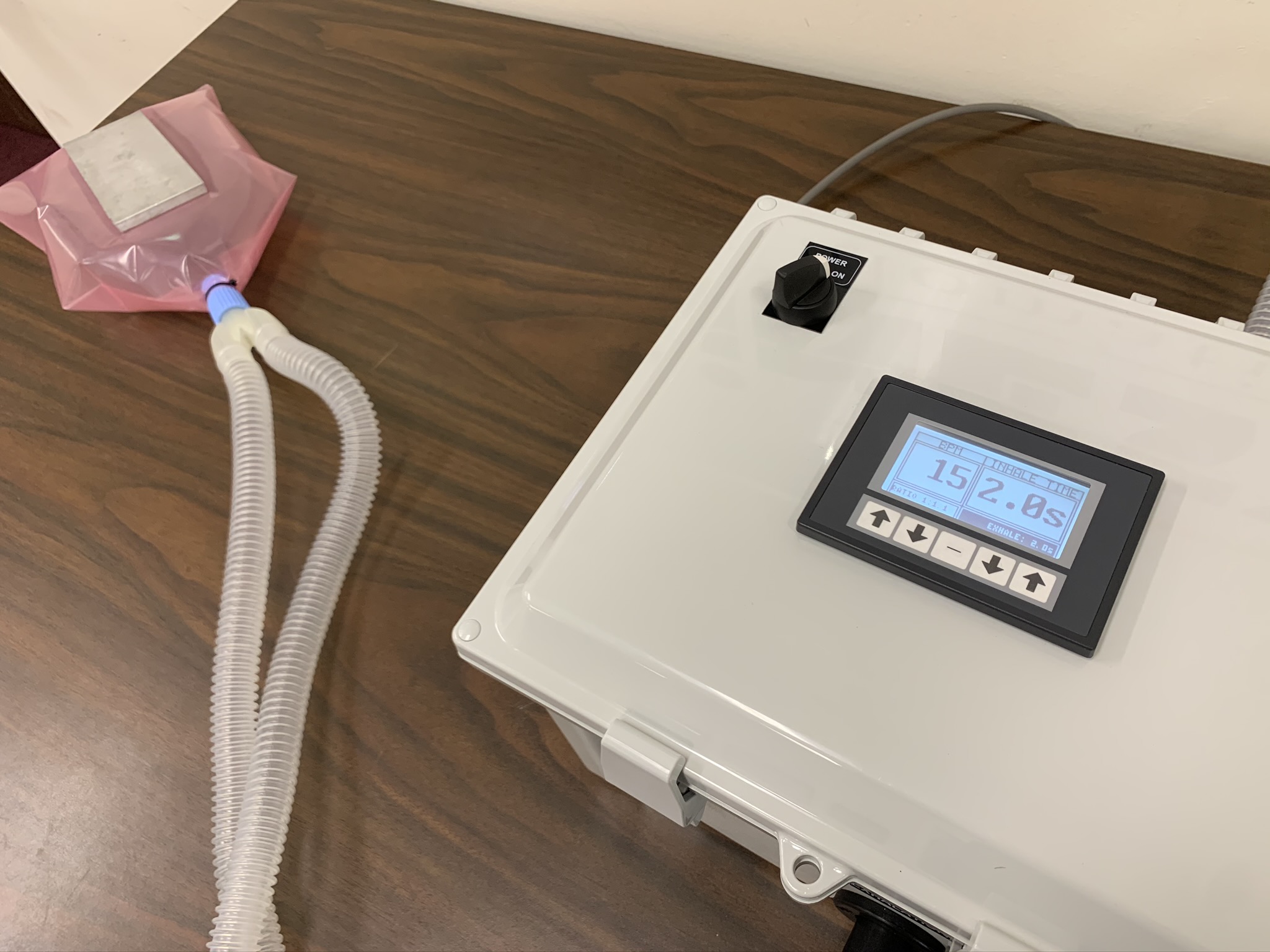Kinesys Automation is located in Oakland, New Jersey; a town in the northwestern part of Bergen County. Proximally located to the NY metro area, Northern NJ has experienced the highest number of COVID-19 cases in the state.
In order to fulfill a promise made to an asthmatic family friend who lost her husband to COVID-19, Kinesys Automation designed a control box that allows an ordinary CPAP machine to be operated as an emergency ventilator. Designs are based on a device initially developed by a team at Auburn University. Not wanting to profit, and to assist our community and country at large, Kinesys Automation is making all the pertinent documentation relating to the design and build of such a control box available for free download.
Using predominantly readily available, off the shelf components from McMaster-Carr Supply Company and Automationdirect.com, the system is primarily comprised of two normally closed, solenoid operated valves manufactured by ASCO Valves (*) that are controlled by a low cost PLC (Programmable Logic Controller). The PLC is programmed to toggle the state of the valves so that when one valve is on, the other is off. The valves alternate state cyclically allowing one valve to be dedicated for inhalation, while the other valve is dedicated for exhalation. The duration of time each valve stays on/off is dependent on two variables:
- I/E ratio – the ratio of inspiratory time to expiratory time
- BPM – breaths per minute required by the patient.
The two parameters are related as follows: tinh = R*texh AND texh = 60/(N*(R+1))
- tinh – time (seconds) for the inspiratory valve to be on and for the expiratory valve to remain off
- texh – time (seconds) for the expiratory valve to be on and for the inspiratory valve to remain off
- N – the desired number of breaths per minute (BPM)
- R – the inspiratory to expiratory ratio (I/E)
For example if the I/E ratio is 1:2 and BPM is 10, then the inspiratory valve is on for 2 seconds while the expiratory valve is off, followed by the expiratory valve being on for 4 seconds while the inspiratory valve is off. This is repeated 10 times per minute to yield 10 BPM. The control box is equipped with a HMI (Human Machine Interface) making it possible for the user to enter the desired BPM and inspiratory time. The system automatically calculates the expiratory time and I/E ratio and displays those values on the HMI. The enclosure is equipped with 4 ports; two on the side coming/going to the CPAP machine, and two on the patient side.
- Port 1 – Connects to the CPAP machine such that constant air pressure is being supplied to the control box. This is plumbed to the ‘IN’ port of solenoid valve 1.
- Port 2 – Connects to a respiratory hose allowing the patient to inhale air from the CPAP machine. This is plumbed to the ‘OUT’ port of solenoid valve 1.
- Port 3 – Connects to a PEEP valve. This is plumbed to the ‘IN’ port of solenoid valve 2.
- Port 4 – Connects to a respiratory hose allowing the patient to exhale air through the PEEP valve. This is plumbed to the ‘OUT’ port of solenoid valve 2.
It is advisable to install a viral filter on each of ports 2 and 4 so that the air being inhaled and exhaled by the patient is filtered, and thus the patient’s air remains isolated from the world. The pertinent documents for constructing this control box are available for free download. Included are an electrical schematic, the PLC and HMI programs, a bill of materials (BOM), and detail mechanical drawings of the electrical box and nipples. CAUTION: This device has not been tested in the field or tested on any individual. The documentation is solely being made available for reference only, and the designer, builder and/or user assumes all liability regarding the design and operation of such a device. THIS DEVICE IS NOT CERTIFIED BY THE U.S. FOOD AND DRUG ADMINISTRATION (FDA). The FDA has, however, issued mitigation guidance to health care providers and outlined a policy to help fill the gap of available ventilators in an emergency situation such as the COVID-19 pandemic. Additional information can be found here.







